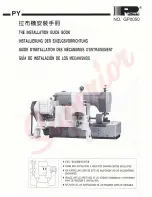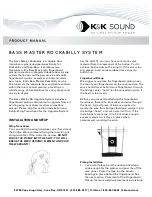
12
NivoGuide® 8100 • Two-wire 4 … 20 mA/HART
4 Mounting
58878-EN-190215
4 Mounting
4.1 General instructions
On devices with a threaded fitting, the hexagon on the process fitting
must be tightened with a suitable wrench.
See chapter "
Dimensions
" for wrench size.
Warning:
The housing or the electrical connection may not be used for screw-
ing in! Tightening can cause damage, e. g. to the rotation mechanism
of the housing.
Protect your instrument against moisture ingress through the following
measures:
•
Use a suitable connection cable (see chapter "
Connecting to
power supply
")
•
Tighten the cable gland or plug connector
•
When mounting horizontally, turn the housing so that the cable
gland or plug connector point downward
•
Lead the connection cable downward in front of the cable entry or
plug connector.
This applies mainly to outdoor installations, in areas where high
humidity is expected (e.g. through cleaning processes) and on cooled
or heated vessels.
To maintain the housing protection, make sure that the housing lid is
closed during operation and locked, if necessary.
Make sure that the degree of contamination specified in chapter
"
Technical data
" meets the existing ambient conditions.
Metric threads
In the case of instrument housings with metric thread, the cable
glands are screwed in at the factory. They are sealed with plastic
plugs as transport protection.
You have to remove these plugs before electrical connection.
NPT thread
In the case of instrument housings with self-sealing NPT threads, it is
not possible to have the cable entries screwed in at the factory. The
free openings for the cable glands are therefore covered with red dust
protection caps as transport protection. The dust protection caps do
not provide sufficient protection against moisture.
Prior to setup you have to replace these protective caps with ap-
proved cable glands or close the openings with suitable blind plugs.
Make sure before mounting that all parts of the instrument exposed to
the process are suitable for the existing process conditions.
These are mainly:
•
Active measuring component
•
Process fitting
•
Process seal
Screwing in
Protection against mois-
ture
Cable glands
Suitability for the process
conditions
Summary of Contents for NivoGuide 8100
Page 72: ...72 NivoGuide 8100 Two wire 4 20 mA HART INDEX 58878 EN 190215 U Units 26 ...
Page 73: ...73 NivoGuide 8100 Two wire 4 20 mA HART Notes 58878 EN 190215 ...
Page 74: ...74 NivoGuide 8100 Two wire 4 20 mA HART Notes 58878 EN 190215 ...
Page 75: ...75 NivoGuide 8100 Two wire 4 20 mA HART Notes 58878 EN 190215 ...













































